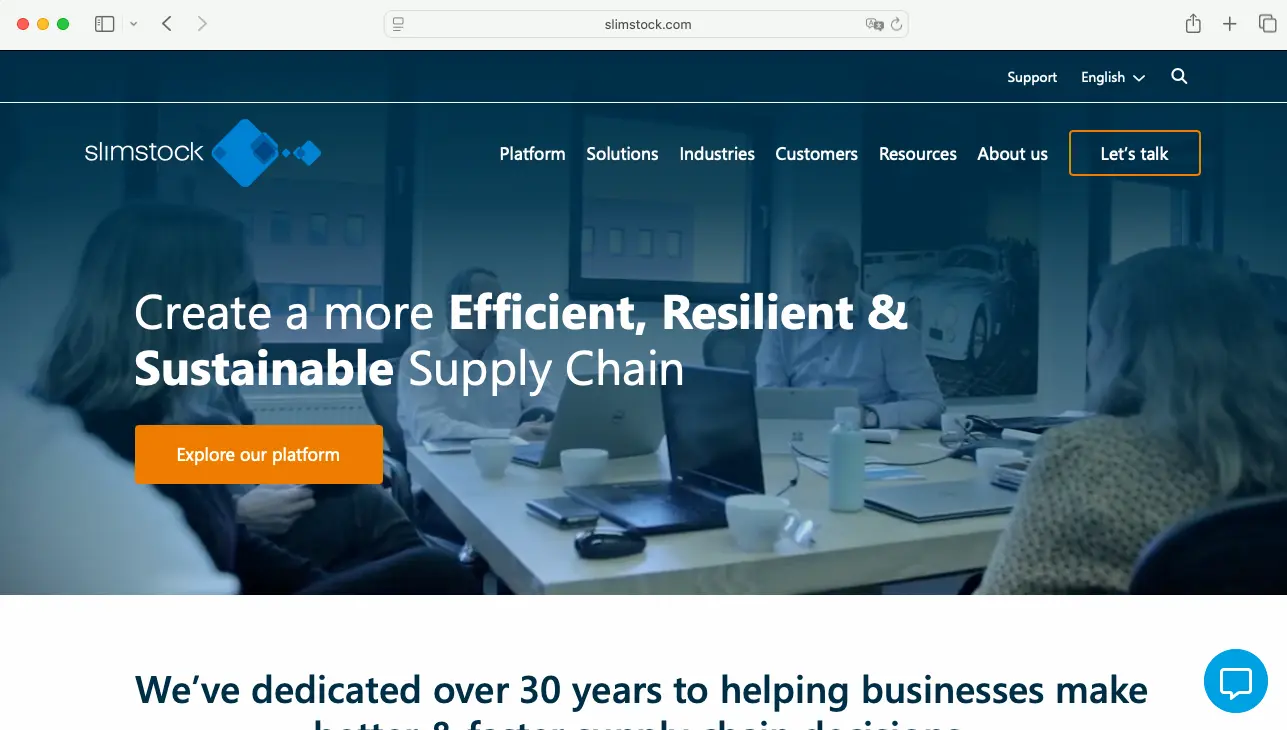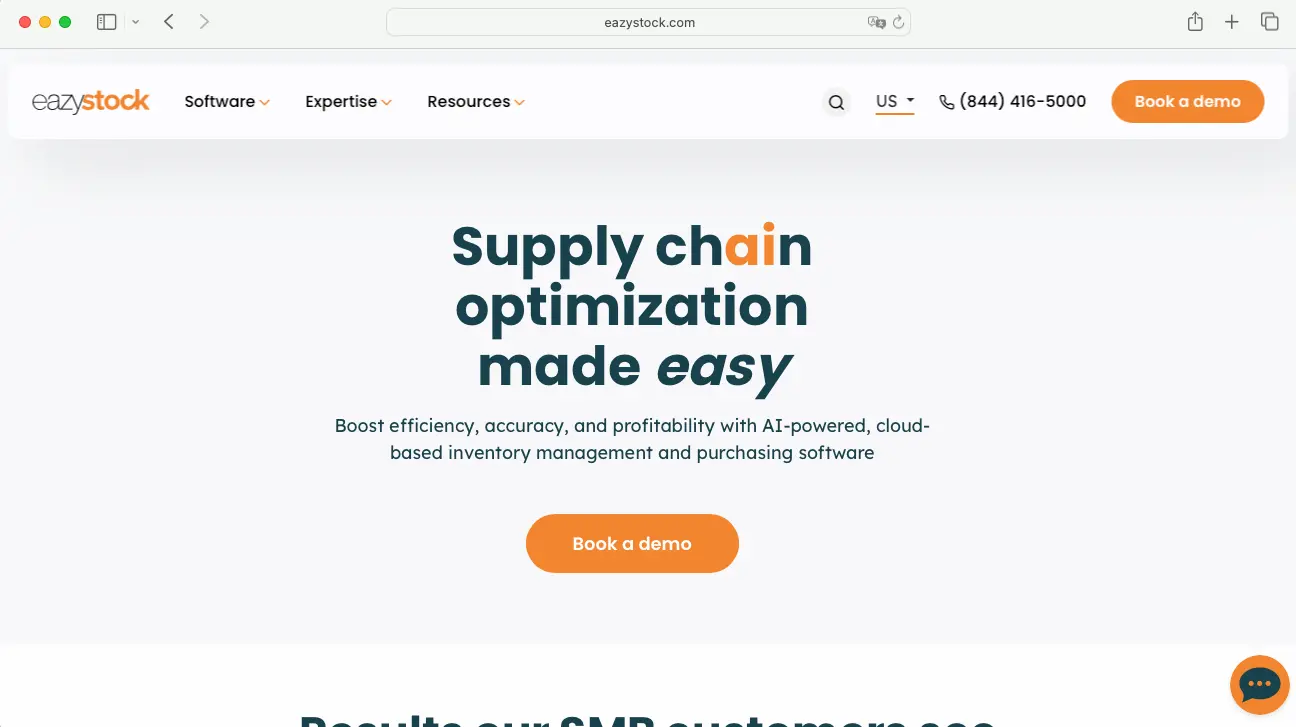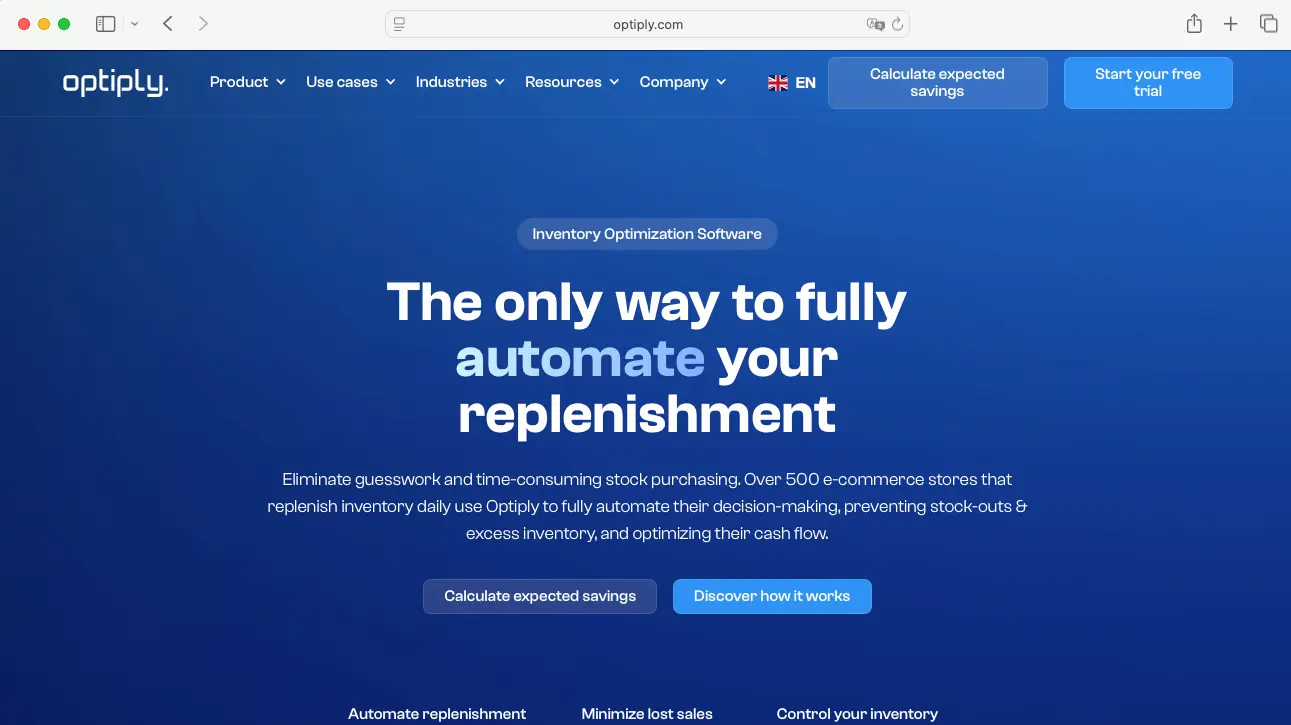
In short
If you're comparing Slimstock and EazyStock, you're likely looking for smarter ways to handle stock, reduce manual work, or scale your operations. Here’s a quick breakdown of the inventory optimization software solutions to help you get started:
- Slimstock is built for large companies with in-house supply chain teams. It offers deep control and highly configurable forecasting models, but comes with a long implementation time and steep learning curve.
- EazyStock focuses on simplifying inventory planning for mid-sized businesses and ERP users. It’s easy to use but offers less flexibility and fewer automation options, making it better suited for companies with simpler purchasing needs.
- Optiply combines the best of both worlds: AI-driven forecasting, 100% purchasing automation, and a short implementation time. It’s ideal for fast-moving e-commerce and wholesale companies looking for a solution to scale efficiently.
How we reviewed the platforms
To make this comparison as useful and objective as possible, we looked beyond feature lists. Here's what we reviewed:
- Public reviews and platforms: We consulted platforms like G2, Capterra, and Trustpilot to get a broader view of user satisfaction and support quality.
- Ease of use and implementation: We evaluated how quickly each tool can be implemented, how intuitive it is to use day-to-day, and how much internal expertise is required to get value from it.
- User input: We’ve included feedback we heard from users of those platforms.
- Depth of automation: Since automation is often the key reason to invest in inventory software, we looked closely at how each platform handles purchase automation.
Each solution has its own strengths, and the right fit depends on your team, supply chain complexity, and growth plans. Now let’s have a look at the two solutions and how they compare.
Slimstock: Advanced control for complex supply chains
Slimstock is a well-established inventory optimization provider known for its advanced forecasting engine and deep configurability. Designed for large supply chain teams, Slimstock offers end-to-end support for planning, purchasing, and replenishment, but requires significant setup, training, and internal capacity to run effectively.

Key features:
- Forecasting engine based on statistical models, historical data and machine learning
- Scenario planning and manual overrides
- Inventory classification and safety stock calculations
- Advanced simulations and policy management
- Supply chain planning
- Deep ERP integrations (SAP, Microsoft, Oracle, and more)
- Consulting and training via in-house experts
Target audience: Slimstock is ideal for enterprise-level retailers, wholesalers, and manufacturers with stable, plannable supply chains and a dedicated supply chain or demand planning department. It’s a good fit if you want maximum control and don’t mind spending more time on setup and ongoing checks or verification.
EazyStock: Simpler inventory planning for ERP-driven businesses
EazyStock positions itself as an easy-to-use add-on for inventory planning, especially for companies already running ERP systems like Microsoft Dynamics, SAP Business One, or NetSuite. The tool is focused on simplifying demand forecasting, replenishment, and stock classification without needing a large in-house team.

Key features:
- Demand forecasting based on historical sales, seasonality and machine learning
- Dynamic safety stock and reorder point calculations
- Inventory classification and segmentation (ABC analysis)
- Purchase order automation
- Supplier lead time tracking
- Cloud-based add-on that connects with most ERP systems
- Built-in dashboards for stock health and KPIs
Target audience: EazyStock is aimed at mid-sized distributors, wholesalers, and manufacturers that want to improve their planning processes without replacing their ERP. It’s a good fit if your team needs more forecasting capabilities than your ERP offers, but doesn’t need full end-to-end automation or complex configurations.
Slimstock vs EazyStock: a side-by-side comparison
Both Slimstock and EazyStock are well-known brands when it comes to inventory optimization software. But their approach and ideal customer profiles differ. Slimstock is built for large companies with in-house supply chain teams that want full control over planning and forecasting.
EazyStock, on the other hand, is designed for mid-sized businesses using ERPs that want to simplify inventory management without a complex setup. Curious what other differences and similarities they have? We’ve got you covered, here’s a complete overview.
Now that you know how both solutions compare, the question remains: which one is the better choice for you? Neither platform offers full purchasing automation out of the box. Users typically need to review and approve order proposals manually.
Yet full automation can make a huge difference, not just in the time spent on inventory optimization, but also in your cash flow, stock levels, and lost sales. That’s why we’re introducing a third alternative.
Optiply: AI-driven inventory optimization
Optiply, yes that’s us, is an AI-powered inventory optimization platform built for e-commerce, retail, and wholesale businesses that purchase daily and manage large assortments. Where other software mostly signals what’s going wrong, Optiply actually fixes it, automatically.
From forecasting to sending purchase orders, the platform takes real-time data and turns it into smart, autonomous purchasing decisions.
Instead of wasting time checking exceptions, updating spreadsheets, or guessing how much to order, purchasing teams can fully automate their replenishment. That means fewer stockouts, less excess inventory, and more time to focus on growth.

Key features:
- Dynamic purchasing calendar to adjust to shifts in demand or supply and ensure the most profitable purchasing decision.
- Real-time forecasting to predict demand using machine learning and millions of product data points.
- ABC-XYZ categorization and automation to organize products by revenue, margin, or sales and optimize availability.
- Multi-supplier matching to automatically select the best supplier based on price, delivery time, and availability.
- Purchase order automation to send purchasing recommendations directly to suppliers via EDI, portal, or email.
Integration with all your data sources to connect ERP, WMS, pricing, marketing, and supplier data for smarter decisions.
Target audience: E-commerce, retail and wholesale companies that want to automate daily purchasing
Make the right purchasing decisions 100% automatically to prevent stockouts and overstock.
How does Optiply compare?
Now let’s take a look at how Optiply compares to Slimstock and EazyStock so you can decide which solution is right for your business. We’ll use the same categories as in the table above.
- Ideal for: Fast-growing e-commerce, retail, and wholesale companies with large assortments and daily purchasing
- Forecasting approach: Real-time, AI-driven forecasting using internal data and external signals like supplier lead times and marketing activities
- Automation: 100% purchasing automation, from forecast to purchase order, without manual review (unless you really want to, but results are almost never better when you do.)
- Data: Combines ERP, WMS, supplier, pricing, and marketing data for demand prediction and decision-making
- Implementation time: Live in 2-4 weeks, including onboarding and integrations
- Ease of use: No training or configuration needed, teams can start using the platform right away
- Supplier management: Automatically selects the best supplier based on pricing, lead time, and availability
- Scalability: Built to scale with fast-moving businesses, easily adapts to new warehouses, channels, and assortments
- Contracts & pricing: Monthly contracts with transparent pricing and a free trial
Mastertools uses smart inventory management and dynamic pricing to maximize profit. The impact of data-driven purchasing led to more control, growth, and higher margins.
The results speak for themselves:
- 50% fewer back orders
- 21% less inventory
- 92% of purchasing automated
"Our two buyers now spend no more than 15 minutes a day on replenishment, thanks to 92% automation. It used to take them the entire workday. At the same time, we cut our bders in half and reduced inventory by 20%."
Want to learn more about how Optiply works? Check out our ‘how it works’ page to see how we start with a business case and move all the way to fully automated purchasing.
Slimstock vs. EazyStock vs. Optiply: which one should you choose?
If you deploy specialized supply chain experts to keep full operational control over purchasing, Slimstock may be the right fit. EazyStock is ideal for mid-sized businesses that want to simplify inventory planning without needing advanced configurations.
But if your goal is to automate purchasing as much as possible, and scale without increasing manual work, Optiply offers the smartest, most future-ready option.
Curious how it works in practice? Book a free demo and see how Optiply can help your business save time, reduce stockouts, and grow with less inventory.
Answers to frequently asked questions
Do you have questions about Optiply? We've gathered the most frequently asked questions for you.













.webp)
.webp)